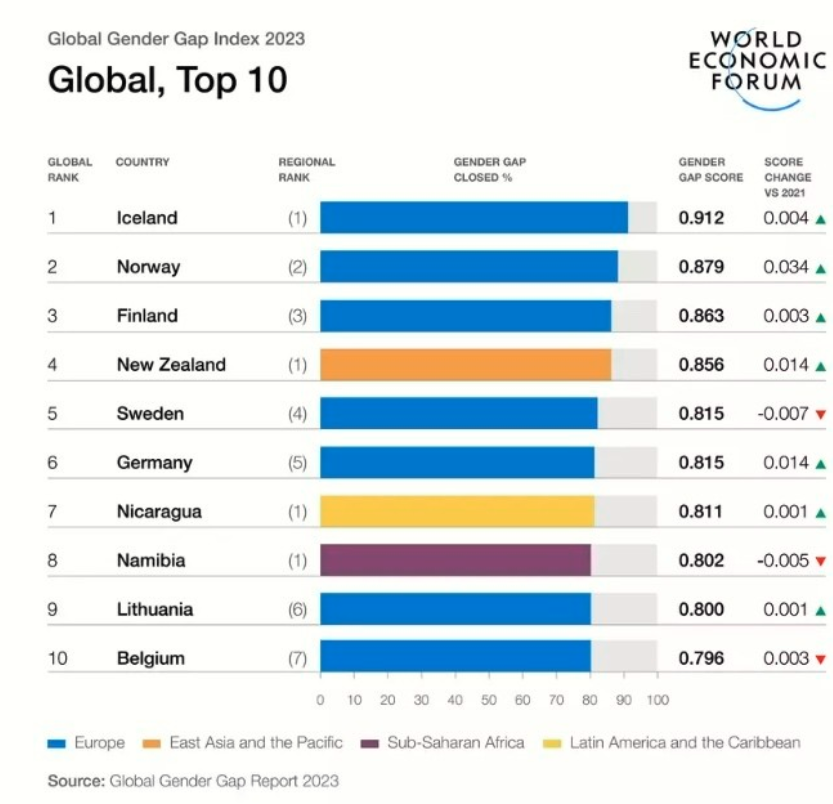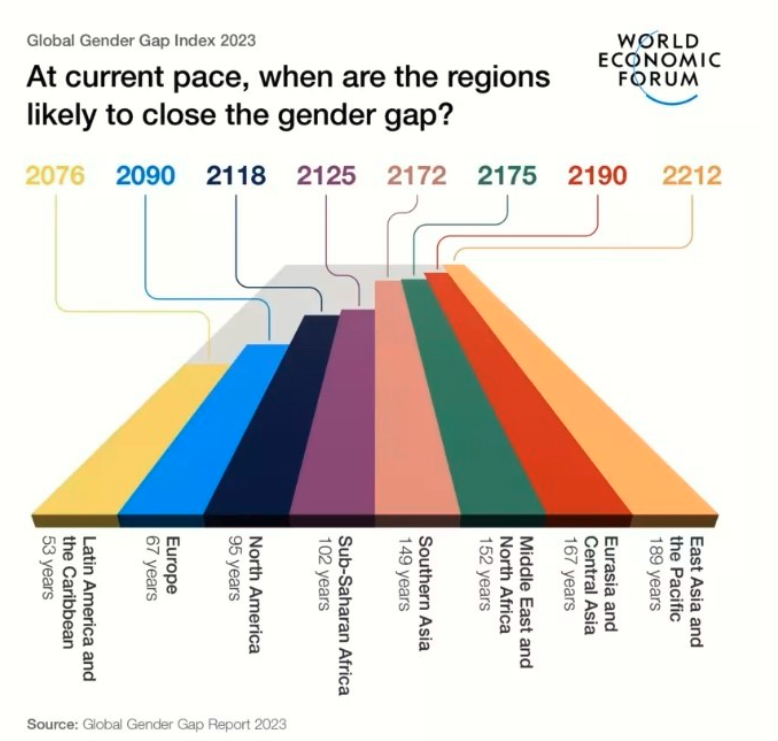by Johnny Wood*
Things are changing, but not fast enough. This is one of the key takeaways from the World Economic Forum’s Global Gender Gap Report 2023. It says that the state of gender parity returned to pre-pandemic levels, but that progress on reaching gender parity has slowed.
“Women continue to bear the brunt of the current cost-of-living crisis and labour market disruptions,” says the Forum’s Managing Director, Saadia Zahidi. “An economic rebound requires the full power of creativity and diverse ideas and skills. We cannot afford to lose momentum on women’s economic participation and opportunity.”
Other research from the UN Development Programme says that cultural biases and pressures continue to hinder women’s empowerment, with almost 9 out of 10 men and women holding deep-rooted biases against women.
The global gender gap in numbers
The Global Gender Gap Report compares participation rates of women and men across four sectors: economic participation and opportunity; health and survival; educational attainment; and political empowerment.
Here’s a quick look at the current global gender gap in numbers.
2154
It will take another 131 years to close the global gender gap at the current rate of progress. This means we won’t realize a gender equal society until the middle of the next century, unless more action on equality is taken.
0.3 percentage points
Progress is being made towards gender parity, but at a snail’s pace. The overall global gender gap closed by just less than a third of one percentage point compared with last year, to 68.6% from 68.3%.
0.912
Iceland’s gender parity score is closest to 1 (parity), meaning it has the smallest gender gap of any country. This is a slight year-on-year improvement for the Nordic nation, which has topped the report’s rankings for the past 14 years. A score of 0.912 means it has closed more than 90% of its gender gap.

4
The number of Nordic countries in this year’s gender parity top five. As well as Iceland in the top spot, Norway (87.9% of the gap closed) is up one place from 2022, while Finland (86.3%) is down one place to third. New Zealand, the only non-Nordic nation in the top five, ranks 4th, followed by Sweden.
4.1 percentage points
Global gender parity has advanced by 4.1 percentage points since the first Global Gender Gap Report in 2006, with the overall rate of change slowing significantly in recent years.
16 years
The health and education sectors are showing positive signs of improvement on gender parity, and the global educational attainment gap could be closed in 16 years. This contrasts to the 169 years for sectors such as economic participation and opportunity, and 162 for political empowerment.
76.3
Europe has the highest gender parity of any region, having closed 76.3% of its gender gap. This means it has displaced last year’s leading region, North America. A third of European countries rank in the top 20 list and more than half have achieved at least 75% parity.

2076
Latin America and the Caribbean registered a 1.7 percentage point increase in overall gender parity since the last report – the fastest of any region – meaning it has closed 74.3% of its gender gap. At this rate, it would reach parity in 2076, putting it 14 years ahead of Europe.
-0.9 percentage points
Gender parity in the Middle East and North Africa region decreased by just less than 1 percentage point this year. It is the least gender-equal region, with 62.6% of its gender gap having been closed, although states like the UAE and Israel have reached around 70% parity, while five other states have increased their parity by 0.5% or more.
32.2%
This is the percentage of leadership positions (director, vice-president or C-suite) occupied by women, despite women accounting for almost 42% of the global workforce. While the proportion of women in leadership positions has increased annually by around 1% over the past eight years, this year numbers fell back to 2021 levels.
*Writer, Forum Agenda
**first published in: Weforum.org




 By: N. Peter Kramer
By: N. Peter Kramer

